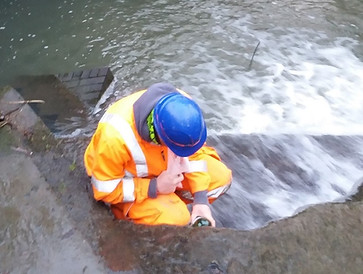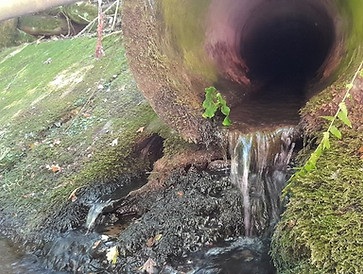
Geoenvironmental Consultants Ltd

Groundwater and Surface Water Monitoring
The collection of samples of groundwater and / or surface water over a period of time can help detect trends, determine the origin of pollutants, and quantify the effectiveness of remedial works or the impact of natural attenuation processes.



What is Groundwater and Surface Water Monitoring?
The retrieval and analysis of water samples often forms an important element of a Phase II Ground Investigation. This may comprise the sampling of groundwater from borehole standpipes, the collection of samples from surface water features such as rivers, streams, ponds and lakes, and / or the retrieval of samples from man-made features such as drainage systems and outfall pipes. Information collected via water monitoring, such as groundwater level, flow direction and the quality of both groundwater and surface water, feeds into the ground model (a representation of the site geology, hydrogeology, surface hydrology and contamination sources) to help describe the interactions between the different water bodies and the potential risks to specific receptors such as potable abstraction boreholes and environmentally sensitive watercourses. Groundwater can transport contaminants onto a site from off-site sources, pick up contaminants from on-site sources, and convey contaminants to neighbouring sites or receptors such as watercourses. Determining the range of contaminant concentrations within groundwater across a site area, at locations off-site and within local surface waters are all necessary elements to form an accurate ground model from which to base risk assessments and potential mitigation strategies. Good quality monitoring data is also essential should this be required for modelling purposes when undertaking a Detailed Quantitative Risk Assessment.
Due to the dynamic nature of the water environment, the chemical quality of groundwater and surface water can change over comparatively short periods of time, and can respond quickly to, for example, pollution incidents and remediation works. As such, extended periods of water monitoring are often required to determine changes to groundwater plume concentrations and dimensions, variations in surface water quality and to warn of potential impacts on specific receptors.
On some heavily contaminated sites, non-aqueous phase liquids (NAPL) may be present on the surface of the groundwater or at depth. Light Non-Aqueous Phase Liquids (LNAPL), such as fuels and oils, are lighter than water and therefore float on the surface of the groundwater. Dense Non-Aqueous Phase Liquids (DNAPL), such as chlorinated solvents and coal-tar, are heavier than water and therefore continue to sink until they reach low permeability strata. It is important that groundwater monitoring is designed to identify the presence of LNAPLs (which is generally easier for LNAPL than DNAPL) as they act as ongoing sources for dissolved contamination plumes.
The regular monitoring of water quality, (i.e. the sampling and analysis of water samples at regular intervals over a period of time), is an essential element in detecting short to medium term trends, determining the significance of pollution risks and identifying the likely sources of contamination. Water monitoring programmes are often undertaken during and after remediation works to provide evidence that such works are having a positive impact, or to confirm whether natural attenuation processes are occurring (such chemical and biological degradation, dispersion and dilution).
G&J can design and implement appropriate water monitoring programmes, using in-situ testing and sampling techniques (such as disposable bailers, inertial pumping and lo-flow sampling) appropriate to the contaminants of concern and the monitoring objectives.